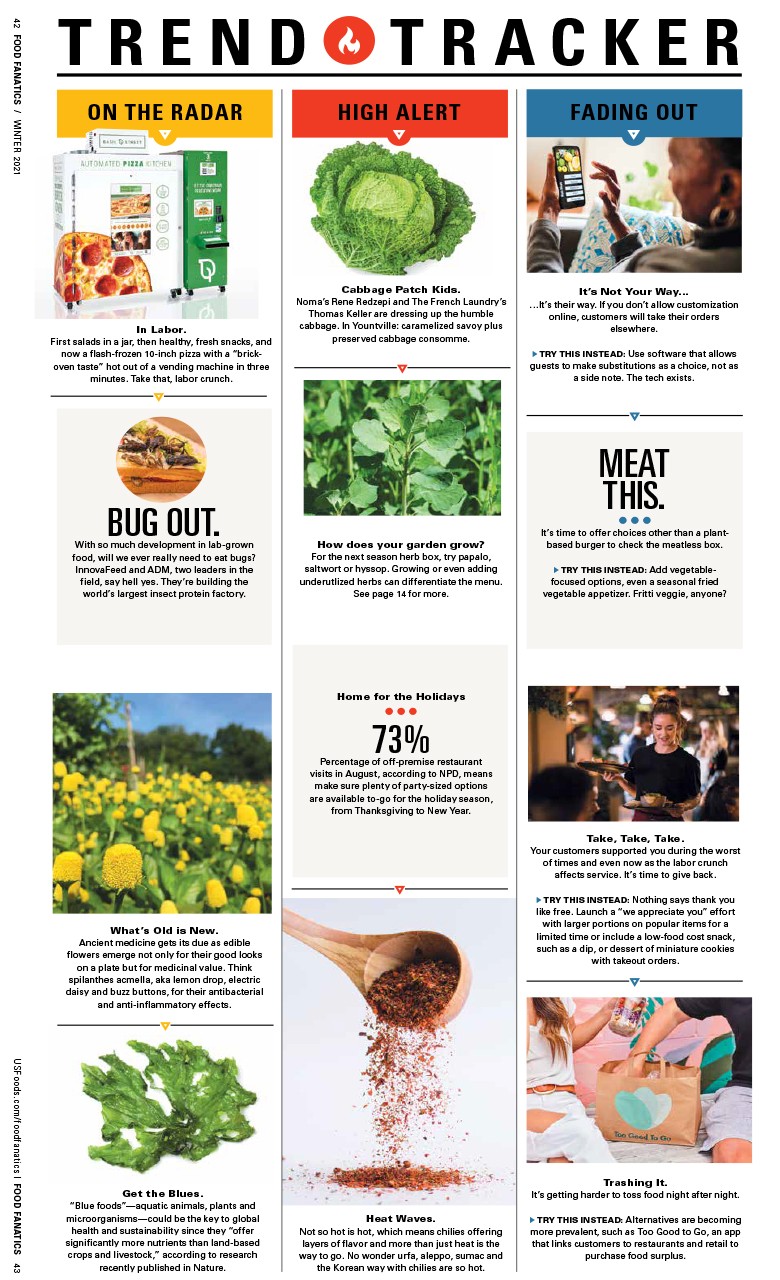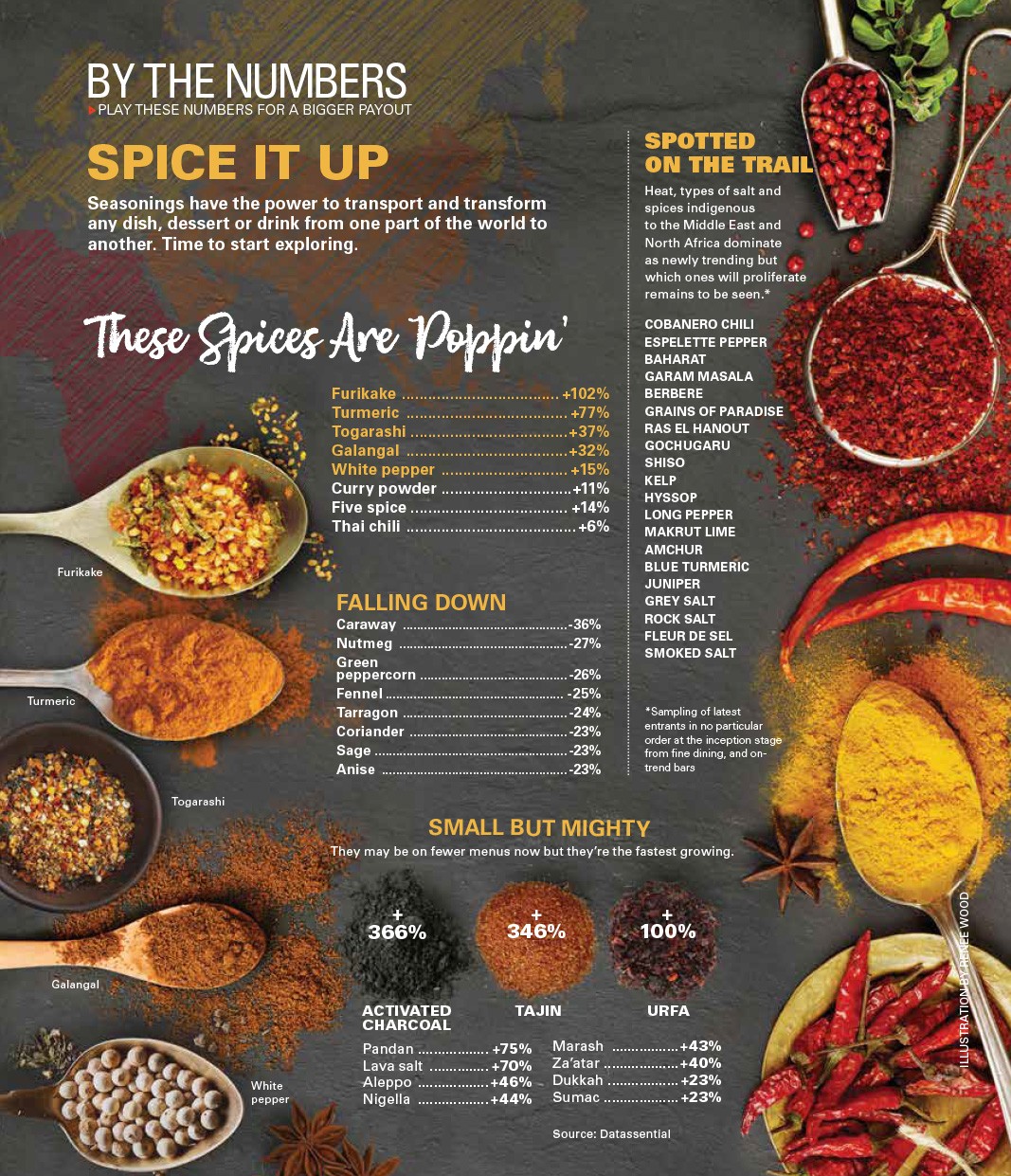Tater Tot Mania
Once toddling on kids plates, this iconic spud is all grown up
Forget everything you know about that cafeteria side dish kids love—these tots are for adults only. From sandwich shops to fine dining temples, restaurants are tricking out tater tots in new ways, transforming them into bar snacks, entrees, Bloody Mary garnishes and even serving tots without the tater.
But where did this tot mania come from? As the popularity of throwback foods continues to rise among trendy independents, chefs are following the lead of chains like Sonic and Taco John’s to try progressive takes on the French fry alternative while creating the perfect low-cost revenue driver.
OLD SCHOOL TREATS, NEW SCHOOL TREATMENTS
When chef brothers Mike and Pat Sheerin opened their modern American Chicago restaurant Trenchermen last year, no one thought a tater tot would become the signature menu item. Tapping into the food community’s love affair with comfort foods, the pickle tot was born: a cross between a tater tot and a fried pickle, served with a red onion yogurt sauce and chicken bresaola. It became a runaway hit, despite its $12 price tag. Pat Sheerin says the tots are “a great introduction to what we do at Trenchermen, [presenting] familiar flavors in an unfamiliar way.”
For Chef Adam Stein of Cause in Washington, DC, tots serve a different purpose: a recognizable format that entices customers to try less common cuts of meat. Stein’s version resembles the cylindrical tot but is potato-less, consisting of pulled pork trotter mixed with whole-grain mustard and other seasonings and rolled in panko. “They are an innocuous, easily approachable comfort food,” Stein says. “What better way to get people to try pigs’ feet?”
BEWARE OF HIDDEN COSTS: TOPPINGS AND LABOR
Although the basic food costs for tater tots are low, don’t assume they’re the cheapest dish to produce. While the Sheerins say the profit margin on their pickle tots is solid, production is labor intensive and requires an adept employee. The recipe requires a day of prep and includes tedious ingredients that need time to set, like gelatin, agar agar and meat glue.
To make up labor costs, Trenchermen added a dollar to the price of the pickle tots after they were first introduced. Filling 300-400 orders per week, the Sheerins say the extra dollar per order helps offset the cost of additional shifts for a cook.
Tater tot-covered nachos or “totchos” are the top seller at Atlanta’s The Nook with almost 1,500 orders sold in one month. But general manager Meagan Hodge says that when it comes to pricing, shredded potatoes aren’t the only cost factor.
“When you add quality ingredients on top, you increase your costs,” Hodge says. Serving toppings like mac ‘n cheese, Coca-Cola barbecue sauce, pulled pork and house-made chili add up, which is why the restaurant’s totchos range from $5 to $9.
JUST CAN'T GET ENOUGH
Tater tots can be a major draw for customers—and an inspiration for competitors. The Parmesan and rosemary mashed tater tots with bacon jam or fruit jam are the biggest seller at San Francisco’s Jamber Wine Pub, but long before opening, Chef-owner Jess Voss had been eyeing them around town. “[I would] visit restaurants just to try their tots,” Voss says. “I love them and always knew I would have them on my menu.”
The feelings are mutual. The chefs at Trenchermen, The Nook and Cause all said their tater tots are a top starter, if not the best selling dish overall. Voss says tots’ popularity makes their labor costs worthwhile. “They are the most time-consuming item on our menu to prep—and we can’t make enough of them,” she says.
A national editor for Eater.com, Paula Forbes has yet to meet a tater tot she didn’t like.
|


 From tater treats to imi-taters
From tater treats to imi-taters
